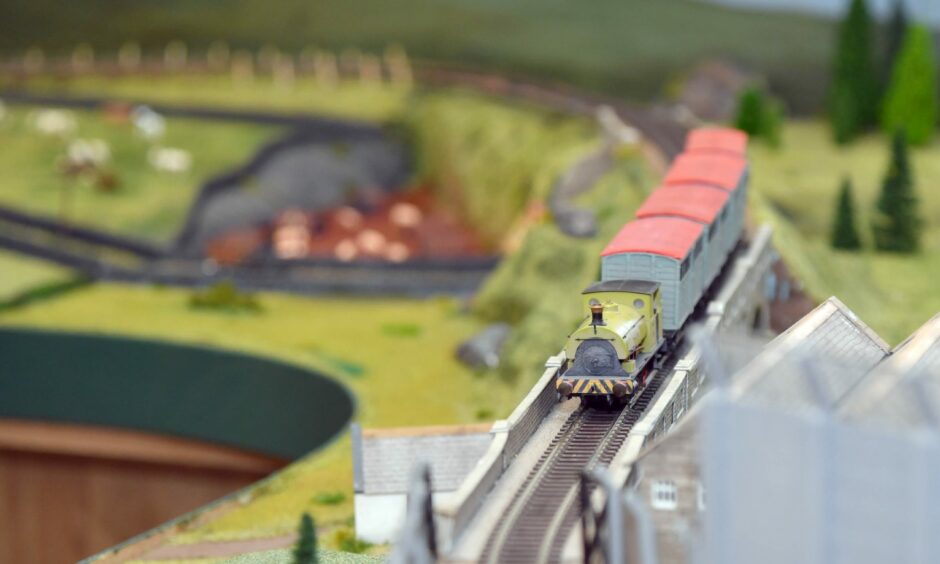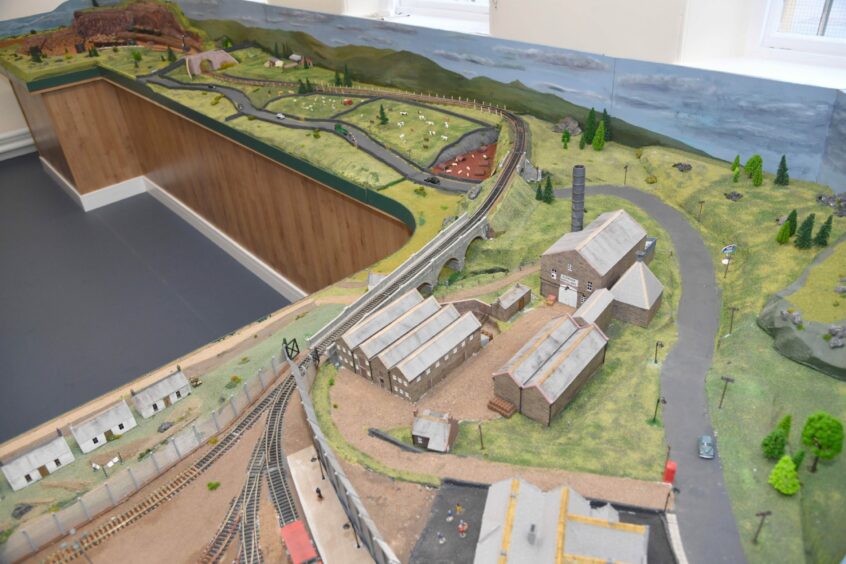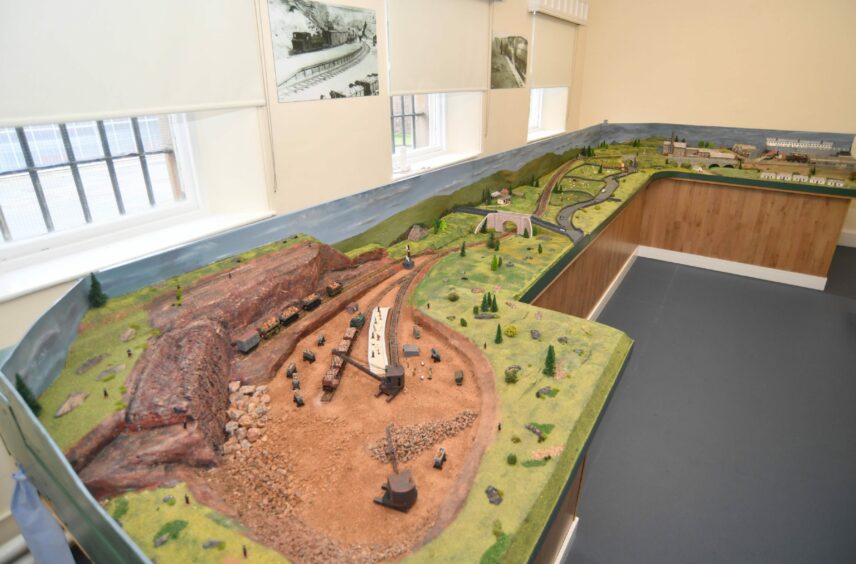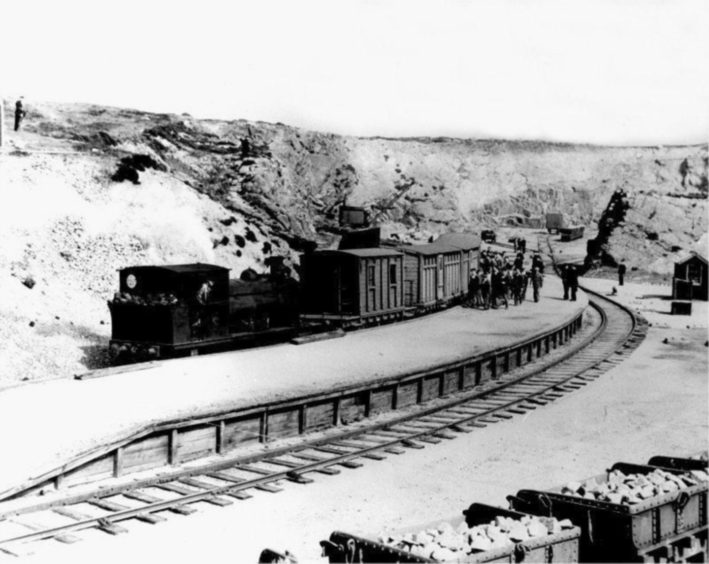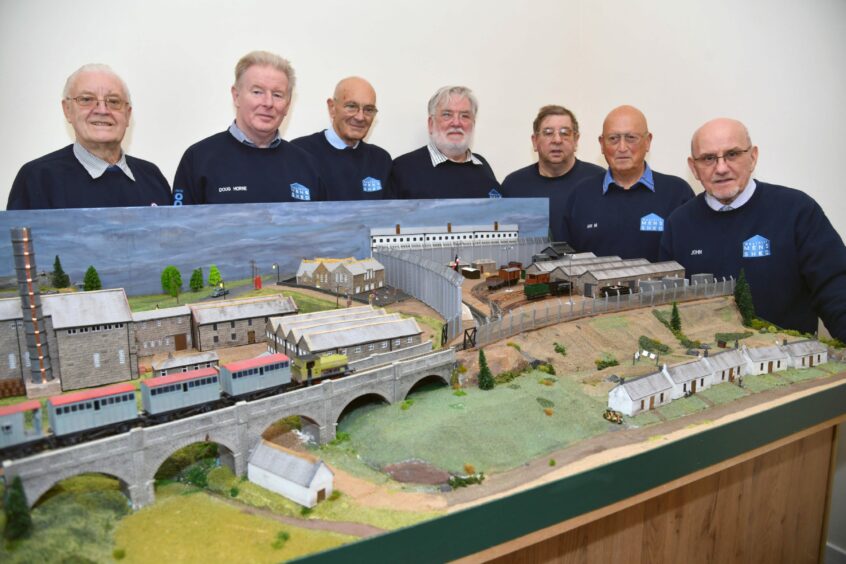It was the first state-owned passenger-carrying railway in Britain; a product of Victoriana which ferried criminals to a place of hard labour in the north-east of Scotland.
And now, more than 50 years after the closure of the Peterhead Prison line, which ran between the Admiralty Yard and a nearby quarry, a collaborative project has led to the creation of West
Peterhead Prison Museum has worked on the venture with the Westhill Men’s Shed, which has spent months during the pandemic bringing the 24-foot model to fruition and it arrived on the premises last week.
The Press & Journal has been granted a special preview of the work, which will go on display to the public in the next few weeks, and they are likely to be impressed with the attention to detail shown by the men’s shed members who built it, using details honed from old pictures of the former railway and many of the features it passed on its journey after opening in 1888.
The museum’s operations manager, Alex Geddes, said he was delighted at the way the initiative had been carried out and praised the innovation shown by the model builders, led by Doug Horne, at the Westhill organisation.
The team have worked wonders
He said: “We first talked to the men’s shed back in 2019, but obviously the world changed in so many ways since we went into lockdown.
“We found out they had built a mini railway for the Grampian Transport Museum [in Alford] and when they heard about the old Peterhead Prison railway, they suggested creating a model of it and doing it on a big scale.
“It immediately seemed like a good idea and it stirred my imagination.
“Peterhead supplied the labour force to work in Stirlinghill Quarry and in the Admiralty Yard which was attached to the prison.
“And the model also shows locations that are now long gone, such as the former village of Burnhaven and the Long John Distillery, as well as the landscape that surrounded the prisoners on their journey in secure carriages.
“When I saw what Doug and his colleagues had done, my jaw just dropped.
“They have worked wonders and have used 3-D printers to bring so many of the details of the old photographs to life.
“We have had so many people asking us about such things as the railway and how it operated and what happened to Burnhaven that I am sure this will prove a popular attraction when it opens in late October or early November.”
Mr Horne explained that his team had faced challenges during the project.
He said: “We were limited in the size of the layout because the original railway line was 2.5 miles long and condensing such a size into a 24-feet room using a 1/76 scale train and track creates all sorts of difficulties.
Between research and trying to replicate all the landmarks it was certainly a challenge, but once we overcame this, we proceeded to build the layout.
“The scenery was then produced and put in place. The hand-built carriages and soundtrack were also produced by our model team.
“We worked very closely with the Museum staff who were always on hand to assist us whenever it was necessary.”
How the prison railway worked
Peterhead Convict Prison was built in 1888 and was originally designed to hold 208 prisoners, all of whom had been sentenced to ‘hard labour’.
Additional buildings were completed in 1909, 1960 and 1962, bringing capacity up to 362, but at various times, 450 men were held within the walls.
The train operators constructed a gate, which used to open between the prison and the Admiralty Yard, so that the convicts could be transported daily to the quarry and back.
And there are evocative images of them being marched off to their daily grind, whatever the weather, to carry out often back-breaking work.
The railway was used by generations of often hardened prisoners, who were under armed guard, and lay on the opposite side of the road at Stirling Hill.
It was an isolated service, created for a specific purpose, but was constructed to a high standard with its own fleet of locomotives, coaches and wagons.
The trains were specially-built vehicles with small barred windows, ensuring there was no prospect of convicts escaping while they were shackled together.
The track bed can be followed along the main road and there was a pink-granite viaduct on the route as people entered Peterhead.
New model captures railway perfectly
Mr Geddes added: “Although we have been closed at various points during the last two years, we have not stopped planning new features at the museum.
“There is a lot of local interest in the prison, the men who were incarcerated here, how they lived and worked in the quarry and their part in helping create the Harbour of Refuge in Peterhead.
“The last block was laid in 1956 and the railway was decommissioned soon afterwards, but it has still has a fascination for many.
“We’re so grateful to Westhill Men’s Shed for doing such a terrific job and we are now getting the model ready for display.”
Westhill sparked pioneering initiative
Members of Westhill and District Men’s Shed were the recipients of the Queen’s Award for Voluntary Service this year in recognition of the outstanding contribution made by their volunteers to benefit the community.
The Aberdeenshire group was the first men’s shed to be created across Scotland and has garnered more than 300 members.
During a brief gathering last month, the Lord-Lieutenant of Aberdeenshire, Alexander Philip Manson presented the organisation with their crystal award, certificate and pin badges before taking a tour of the facilities.
The honour also featured special recognition for the Covid-19 work which has been carried out by its members to protect local people.
Further details of the railway can be found here.
If you enjoyed this, you might like:
